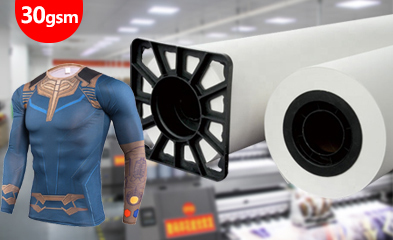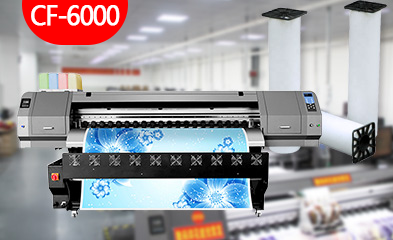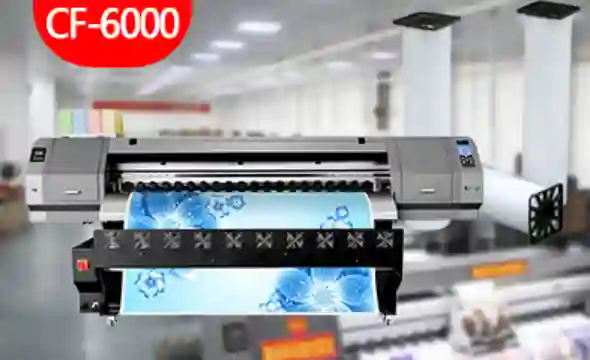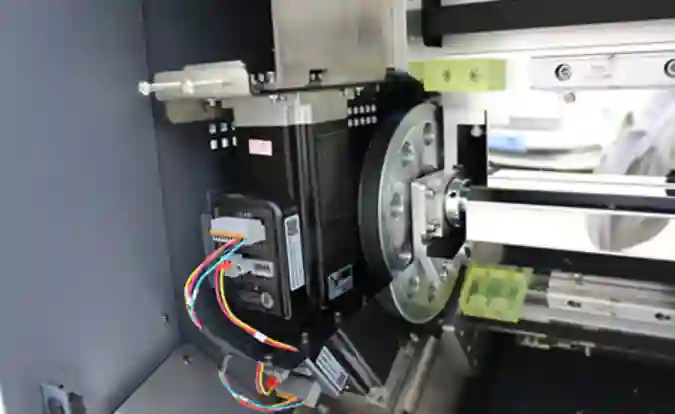HOT SALE
APPLICATION
Phone:+86-15215969856 E-Mail: 396838165@qq.com
White ink plays a key part in Direct-to-Film (DTF) printing. It helps make bright designs. These designs show strong contrast on dark or colored clothes. White ink costs the most in DTF work. So, making its use better cuts costs. It also keeps print quality good. Plus, it makes equipment last longer. This guide looks at ways to get the most from white ink. We focus on right printer settings. We also cover material picks and upkeep tasks.

The Role of White Ink in DTF Printing
White ink is a must-have in DTF printing. Why? It helps designs show up clearly. And it keeps colors lively.
Importance of White Ink in the DTF Process
White ink works as a base layer. It boosts color brightness. It adds opacity too. No white ink means CMYK inks look dull on dark cloth. They turn see-through. Details fade. Contrast goes away. But the base layer holds the design together. It works well on all kinds of cloth colors.
Common Challenges Related to White Ink Usage
White ink sinks fast. That’s because of its heavy bits. This causes clogs in nozzles. Bad settings lead to too much use. Such problems slow things down. They create trash too. To run DTF well, you need to learn white ink care. It’s that simple.
Differences Between White Ink and CMYK Inks in DTF Applications
White ink has titanium dioxide bits. These make it heavy. They make it cover well too. CMYK inks are light. They flow easy because they are dye or pigment based. So, white ink needs special care. Think constant shaking. And checks on nozzles often. All this stops sinking. It stops blocks too.
Key Printer Settings That Influence White Ink Consumption
Good printer setups cut white ink use. And they keep top-notch print quality. Let’s break it down.
White Ink Layer Density
The density of the white base controls ink amount. It also sets how much it covers.
How Layer Density Impacts Coverage and Consumption
A thick layer covers more. But it uses lots of white ink. A thin layer saves ink. Yet, on dark cloth, it fails to hide well. That cuts how good it works. So, find the right thickness. That’s the trick.
Balancing Opacity with Efficiency
Use RIP software to tweak density. Make it change based on cloth color. And on how hard the design is. For light cloth, pick low density. Or skip the base altogether. For black clothes, go thick. That way, designs pop. No guesswork needed.
Print Resolution and Pass Count
How sharp prints look ties to resolution. It affects ink too. Here’s the scoop.
DPI Settings and Their Effect on Ink Usage
High DPI makes pictures crisp. But it drinks more ink. Many folks do best at 1440×720 DPI. That’s a sweet spot. Sharp enough. Not too wasteful.
Multi-pass vs. Single-pass Printing
Multi-pass builds layers. It adds depth to colors. But each pass eats white ink. Single-pass goes quick. It saves ink. Still, you must tune it right. Or clarity suffers. Pick what fits your job.
Color Management and ICC Profiles
Color guides tell the printer what to do. They set white ink amounts in the make.
Role of ICC Profiles in Regulating White Ink Output
ICC profiles match colors just right. They guide the printer. How much CMYK? How much white? It depends on the sheet type. And the cloth shade.
Optimizing Color Balance to Minimize Excessive White Ink
Tweak those profiles a bit. Cut extra white base in pale CMY spots. This saves a bunch of ink. And colors stay true.
Impact of Film Type and Fabric on White Ink Efficiency
What you print on matters. DTF stuff changes how ink soaks in. And how much you need for best results.
Compatibility Between Film Coating and White Ink Absorption
Pick PET films with good coats. They stick strong. They soak little ink. Try this: Single-sided PET film (cold-peel type), 60cm width x 100m length per roll, 0.075-0.085mm thick. For transfer, heat to 160°C. Hold for 10-15 seconds. Right film stops bad sticks. That means less trash. No failed transfers. So, fewer do-overs.
Fabric Color and Material Considerations
Cloth kind sets base needs. Simple as that.
Printing on Dark vs. Light Garments
Dark cloth hides designs. So, add more white base. Light cloth shows easy. It needs just a touch. Or none at all. Use masking in software. Adjust on the fly. Cut waste smartly.
Cotton, Polyester, and Blended Fabrics
Cloths take ink different ways. Polyester holds colors tight. It often needs less passes. And light bases. Cotton soaks more. So, it might call for thick layers. Take this example. Item No. GZP-002. It’s 100% polyester interlock fabric. Width is 183cm. Weight is 170gsm. Great for DTF on fake cloths. Blends fall in between. Test each to learn.
Environmental Conditions and Maintenance Practices
Where you work changes white ink act. The air around your DTF printer matters. In small ways. But key ones.
How Temperature and Humidity Affect White Ink Flow
White ink hates cold spots. It gets thick. Flow slows to a crawl. High wet air? Drying goes wonky. Transfers mess up. Keep room steady. Around 20-25°C. And 40-60% wet. That helps flow smooth.
Regular Maintenance to Prevent Clogging and Waste
Do upkeep often. It keeps things running top. Less down time from jams. Or gunk build-up. Start small. Build habits.
Nozzle Checks and Cleaning Cycles
Check nozzles each day. See if jets spray even. A clog means bad prints. And extra clean fluid. Do deep cleans weekly. Match to how much you print. Stay ahead of trouble.
Agitation Systems for White Ink Stability
Those titanium bits sink quick. So, use shake systems that run non-stop. They keep ink even. For long jobs. No still tanks. They cause uneven mess. Waste follows.
Software Settings That Contribute to Efficient Usage
RIP software is smart. It lets you set white ink just so. For each task.
RIP Software Adjustments for Optimal Output
Tweak choke in the software. Shrink the base under top colors. Designs look clean. No edges. Less white ink covers. Savings add up.
Controlling Underbase Size and Shape with Masking Tools
Mask tools are handy. Put base only where it counts. Skip empty spots. Skip light parts too. Ink stays where needed.
Previewing Before Printing to Reduce Trial-and-Error Waste
Peek first. See layers on screen. Spot big cover areas. Fix before ink flows. No test runs gone wrong. Save cash and time.
Cost Implications of Inefficient White Ink Use
Bad white ink habits hurt the wallet. In big runs. Every drop counts. White ink takes up 30-50% of supply costs often. Ouch.
Financial Impact of Overconsumption in Production Runs
Printers that guzzle? They jack up cost per shirt. Businesses make hundreds. Or thousands monthly. Margins shrink fast. Stay lean. Or lose out.
Strategies to Reduce Operational Costs Through Calibration
Calibrate regular. Check nozzle lines. Update ICC files. Output stays steady. Less fixes needed. Control all supplies. White ones included.
Tips for Enhancing Overall Efficiency in DTF Printing
Setup is base. But tricks make flow better. Across the shop.
Choosing the Right Printer Model for Your Needs
Not all printers handle thick ink same. Pick ones with built shakes. They last years. Less fix-ups than changed ones. Think long game.
Training Operators on Best Practices for Setup and Operation
Teach your team right. They cut re-prints. Manage stuff better. Start with basics. RIP lessons. Daily checks. Tune tricks. Builds steady work.
Introducing Changfa Digital as a Trusted Supplier
Changfa Digital makes Sublimation Paper. They offer digital print help too. The company started in 2006. That’s over 19 years now. It’s a factory spot. They handle base paper work. Coating jobs. Slitting tasks. All for top Sublimation Paper. They give print fixes for folks. Plus, Changfa Digital sells DTF Ink. DTF Powder too. And PET Films. Some with gold shine. Or glitter looks. Perfect for new cloth art needs. Trust them for steady goods. They know the field deep.
Summary of Key Insights
To get white ink right in DTF, mix it all. Hardware tunes. Room watches. Software sets. Materials match. This cuts junk. Gives steady top prints. Every batch shines.
FAQs
Q1: How frequently should the white ink system in your DTF printer undergo maintenance checks?
A: Recommended schedule: daily nozzle inspections and weekly thorough cleanings, adjusted for usage. Printers with automatic agitation need only occasional manual checks.
Q2: Can you reduce white ink application without compromising print quality?
A: Yes, by using RIP software to adjust layer density and masking tools for targeted underbase application, you can cut usage while preserving visual quality.
Q3: Which film types work best with white inks?
A: Single-sided PET film and PET Glitter Gold film excel due to their specialized coatings for cold-peel transfers, ensuring strong adhesion with minimal absorption.




-3.jpg)










